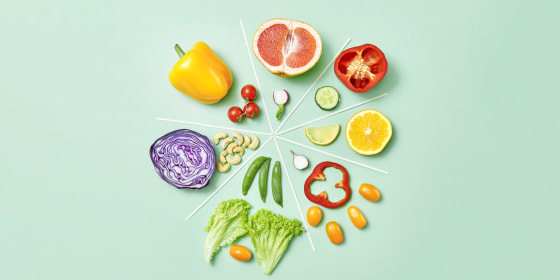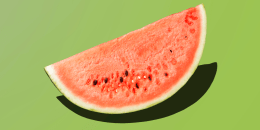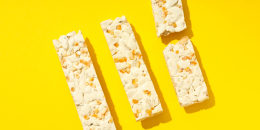In the past, we’ve been sold the idea that weight loss is as simple as a math equation: If you eat fewer calories than you burn, you'll lose weight. This concept is the foundation of the CICO diet, which stands for calories in, calories out. But, the reality of weight management is much more nuanced than just counting calories.
Let’s explore what the CICO diet entails and why calorie counting isn’t always as simple as it seems.
What is the CICO diet?
The CICO diet isn’t a book or an eating plan endorsed by a health expert or celebrity. It’s a traditional approach to weight management based on the logic that if you eat fewer calories than you burn, you’ll lose weight, and if you eat more than you burn, you’ll gain weight.
This diet relies on those following it to be in a calorie deficit, meaning they have to reduce their daily average caloric intake which will result in weight loss. For example, if you typically consume 3,500 calories per day, in order to lose a pound per week, you might shave 500 calories off of your daily caloric intake in order to lower your daily average. Or you might incorporate exercise into your daily routine in order to burn more calories to help maintain that deficit.
While this sounds reasonable, it doesn’t account for other factors involved in weight management, such as genetics, hormones, diet quality, medications and stress. In reality, people’s individual experiences vary considerably when it comes to weight loss, so it’s actually impossible to accurately predict how much weight you’ll lose based on this math.
How do you do the CICO diet?
As long as you stay within a calorie range that's in line with your body's weight loss needs, the theory is you can eat what you want and still lose weight. To stay on track, people often use a calorie counter app when following a CICO diet. But managing weight with calorie restrictions isn't as simple as it sounds.
Not all calories "count" the same way
When it comes to managing your weight, calories count — to some degree — but they don’t all count in the same way. You can think of calories as the energy our bodies derive from food. Calories come from any food you eat — whether that’s an orange, orange juice or orange soda. However, the way food is processed can make a difference in weight management.
One study investigated the effects of a processed food diet compared to a whole food diet. Both diets were equivalent in calories, macronutrients (fat, protein, and carbohydrate), sugar, and fiber, and participants could eat as much or as little as they wanted. Study participants followed each diet for two weeks, with a period in between when they weren’t on any study diet.
Participants ended up eating about 500 calories more on the heavily processed food diet, gaining about two pounds over a two-week period. It’s unclear why this happened, but they ate faster, and their satiety signals were delayed when they ate heavily processed foods. Think about how quickly you can eat a chewy oat granola bar compared to the time it takes to eat a bowl of oatmeal and which sounds more filling. This might be a clue as to why people ate more and gained weight on the ultra-processed food diet despite being offered meals with the same calorie and basic nutrient levels.
Many Americans get a lot of calories from ultraprocessed foods — like sodas and packaged snacks, such as potato chips. In fact, research shows that Americans eat about 60% of their calories from highly processed foods. While packaged foods are convenient, our reliance on these foods comes at the expense of other, more nutritious foods, like fruits and vegetables. Some studies also report that processed foods may be linked to unintentional weight gain, higher blood pressure, cholesterol levels and blood sugar levels.
One criticism of the CICO model is that the method assumes that the number of calories that you absorb from every calorie is the same. That makes good hypothetical sense, but the truth is that our bodies don't actually work that way. Your body absorbs the calories consumed from eating whole foods differently,
For example, studies that examine dietary patterns point to the fact that adults who consume the most servings of whole grains have lower body weights. One possible explanation is that calories from whole grains aren’t absorbed as efficiently as calories from refined grains.
Studies involving almonds have similarly found that we don’t absorb as many calories from eating nuts as we would assume, which may be why they’re also linked with healthier body measurements. Expert-approved diets — like the Mediterranean diet — tend to include nuts.
Some calories fill you up more than others
Certain foods are especially filling, which means that the calories from those foods give you a lot of bang for the buck — or a lot of fullness for the calories. The satiety index is a ranking that indicates how filling a food is based on equal calorie servings of numerous foods. The rankings show, for example, that calories from boiled potatoes are seven times more filling than the same number of calories from a croissant.
Calorie-for-calorie, fish is more filling than beef or eggs. Oatmeal is more filling than bran cereal.
Rather than focusing solely on calories, it’s more effective to become aware of your calorie needs and to develop an understanding of how calories from various foods make you feel. Manage your appetite with filling foods that are also in line with your body’s caloric needs will help you manage your weight and hunger levels.
Liquid calories are especially problematic because there’s clinical evidence that your body doesn’t register them in the same way it registers calories that you chew, so sodas and sweetened coffee drinks aren’t as likely to fill you up. That's because there are nerves in the stomach that help your body sense how full you are by how much your stomach stretches and it stretches less when you consume liquid. So, if you drink high-calorie beverages routinely, you may wind up in a calorie surplus because you still need to eat afterward.
Pros of the CICO diet
One advantage of the CICO diet is that there are basically no rules to follow. You can eat whatever you like as long as you stay within your calorie guidelines.
You can also use the CICO diet with any eating pattern you must adhere to, such as a gluten free or low FODMAP diet, so it’s very flexible.
Research also suggests that monitoring your weight is associated with better weight loss success, so if you’re using the CICO diet and keeping track of your weight, it might improve your chances of successful weight loss. Tracking can also help you pinpoint areas of your diet that need improvement. You may notice, for instance, that you need more fiber or that you’re low on veggies.
Additionally, if you like to indulge in pizza or ice cream sometimes, the CICO diet may help you learn how to do this in a balanced way, and this may make healthy eating more sustainable in the long run.
Cons of the CICO diet
The authors of a study on the CICO diet published in 2021 called the method "tragically flawed,” and I tend to agree. Regulating your body weight is a dynamic process that involves not only the calories and quality of food you eat, but other factors as well, such as:
Your genetics, sex, age and overall health
Appetite-regulating hormones that tell you when you’re hungry and when you’ve had enough to eat
Stress levels and sleep quality, which influence your food choices
The confidence and mindset that you know how to navigate eating and exercising in various circumstances
Access to affordable, nutritious food
How often you intentionally exercise and whether you’re new to it or you’ve participated in it for a while
How much non-exercise movement you get, such as by fidgeting and cleaning
Also, while it’s a pro that the CICO diet is simple and flexible, this is also a con, as it doesn’t emphasize whole foods that not only do a better job of filling you up but also give your body the nutrients it needs to fend off diseases and age better.
Furthermore, the CICO diet requires monitoring your food and calorie intake, which may lead to stress about food and disordered eating.
Finally, the CICO diet doesn’t address why you eat what you eat, such as grabbing a sleeve of cookies after a fight with your spouse or intense cravings after a night of poor sleep. It also doesn’t teach you mindful eating techniques, like listening to your hunger and fullness cues and eating slowly. These methods may help prevent overeating, which can help you manage your weight better.
The bottom line
The CICO diet is a straightforward method of weight management, which is both a plus and a minus. The CICO diet’s flexibility can be appealing, allowing you to eat what you want as long as you stay within your calorie limit, but it overlooks the importance of nutrient-dense, whole foods that not only support weight loss but also promote long-term health. Focusing solely on calories without considering food quality and eating habits may limit your success and even contribute to unhealthy eating patterns.
Additionally, the CICO diet’s emphasis on calories requires you to track your food intake, which may be harmful for some people.










